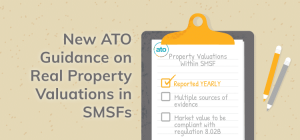Does ATO Regulate SMSF?
Introduction
Self-Managed Superannuation Funds (SMSFs) have become increasingly popular in recent years, offering individuals greater control and flexibility over their retirement savings. However, with this increased control comes responsibility, and the Australian Taxation Office (ATO) plays a crucial role in regulating SMSFs to ensure compliance with superannuation laws and protect the retirement savings of Australians. In this article, we will explore the ATO’s role in regulating SMSFs and the key responsibilities and obligations that SMSF trustees must adhere to. Does ATO regulate SMSF?
What is an SMSF?
An SMSF is a private superannuation fund established and maintained by individuals for the purpose of providing retirement benefits. Unlike retail or industry super funds, an SMSF allows members to act as trustees, giving them control over investment decisions, contributions, and benefit payments. SMSFs can have up to four members, and each member is generally also a trustee, meaning they are responsible for the fund’s administration and compliance.
ATO Oversight of SMSFs
The ATO is the regulatory authority responsible for overseeing SMSFs to ensure they comply with the Superannuation Industry (Supervision) Act 1993 (SISA) and other relevant legislation. The primary role of the ATO in relation to SMSFs is to ensure that trustees are fulfilling their duties and responsibilities and that the funds are being managed in accordance with the law.
1. Registration and Compliance
One of the ATO’s core functions is to register SMSFs and ensure their ongoing compliance. Before a new SMSF can be established, it must be registered with the ATO. This process involves meeting specific requirements, including appointing trustees, creating a trust deed, and formulating an investment strategy.

Once established, the SMSF must comply with various rules and regulations. The ATO sets out the guidelines for acceptable behavior, investment restrictions, and contribution limits. Regular reporting is required, including the lodgment of annual tax returns and statements to the ATO, which allows the regulator to monitor the fund’s compliance and financial health.
2. Investment Regulations
SMSF trustees have the freedom to choose how they invest the fund’s assets, but they must do so prudently and in line with the fund’s investment strategy. The ATO imposes certain restrictions on investments to protect the retirement savings of members. For example, there are strict rules around investing in related-party assets to prevent potential conflicts of interest.
Should the ATO find that an SMSF has breached investment regulations, they have the power to impose penalties, fines, or even disqualify trustees from managing the fund. Therefore, trustees must stay informed about the rules and seek professional advice when necessary to ensure compliance.
3. Contributions and Benefit Payments
SMSFs can receive contributions from members and employers. However, there are limits on the amount of contributions that can be made each financial year, and exceeding these limits may result in additional tax liabilities. The ATO oversees contributions and ensures they comply with the relevant caps.
Similarly, when it comes time for members to access their superannuation benefits, the ATO monitors the payment process to ensure it is done in accordance with the law. This includes ensuring members meet the conditions of release and are paid the correct amount.
Consequences of Non-Compliance
Non-compliance with SMSF regulations can lead to serious consequences for both the individual trustees and the fund itself. The ATO has various enforcement powers to address non-compliance, including issuing rectification directions, imposing penalties, or disqualifying trustees. In severe cases, the ATO can even strip an SMSF of its complying status, leading to significant tax consequences.

It is essential for SMSF trustees to understand their responsibilities and obligations fully. Engaging the services of qualified professionals, such as accountants or financial advisors, can help ensure compliance and mitigate the risk of regulatory issues. For celestino tax smsf compliance see here.
Conclusion
The ATO plays a critical role in regulating SMSFs to protect the retirement savings of Australians and maintain the integrity of the superannuation system. Through registration, ongoing compliance monitoring, and enforcement actions, the ATO ensures that SMSFs operate within the bounds of the law. Does ATO regulate SMSF?
For individuals considering establishing an SMSF, it is essential to understand the responsibilities and obligations that come with being a trustee. Seeking professional advice and staying informed about superannuation regulations will help trustees navigate the complexities of managing an SMSF and ensure they remain compliant with the ATO’s requirements.


